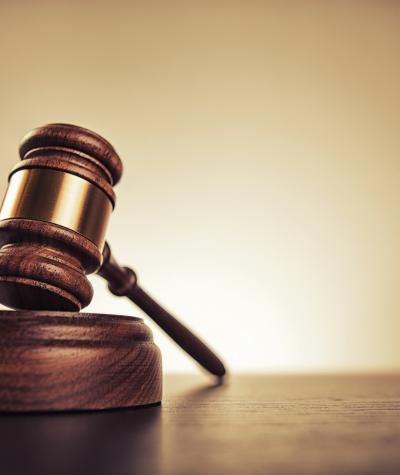This morning, in Shelby County, Alabama v. Holder, the Supreme Court struck down the coverage formula of Section 4 of the Voting Rights Act, effectively gutting Section 5 of the Act requiring “covered” states under Section 4’s formula to “pre-clear” changes in voting law with the federal government before they can take effect. Without a coverage formula, there are no covered states to pre-clear; without pre-clearance, minorities and civil rights litigators are left without an essential weapon in the arsenal for combating discriminatory voting practices.
The Supreme Court heard oral arguments for Shelby in February. A large question during those arguments was whether, in absence of Section 5, voting rights could still be protected under Section 2 of the Voting Rights Act, which implements a nationwide prohibition against voting practices and procedures that result in a “denial or abridgement of the right of any citizen of the United States to vote on account of race or color.” In questioning the attorneys before the Court, Justice Kennedy stated “it seems to me that the government can very easily bring a Section 2 suit” and “it’s not much clear to me that there’s that much difference between a Section 2 suit now and preclearance.”
Speaking last night at the launch of the Voting Rights Institute, civil rights attorney Armand Derfner, who himself litigated early cases under the Voting Rights Act, had a clear answer for Justice Kennedy: “No one who says a Section 2 case is easy has tried a Section 2 case, or seen a Section 2 case, unless they’re lying.” Indeed, as the landscape of voting rights litigation is now significantly changed, the knowledge of attorneys such as Mr. Derfner who have seen, litigated, and won both Section 2 and Section 5 voting rights claims, is essential. In the wake of Section 4’s fall, the Voting Rights Institute will help train a new generation of voting rights litigators by imparting this essential knowledge to lawyers and law students throughout the rest of the week.
The Voting Rights Institute is a new program launched by the Campaign Legal Center and American University’s Washington College of Law. It was organized by the Legal Center’s Executive Director and Director of Litigation J. Gerald Hebert. Spanning four nights, the Institute will feature instruction by Mr. Hebert and other seasoned voting rights practitioners, each with decades of invaluable experience handling voting rights litigation in district and appellate courts. While law school casebooks may explain legal standards, and editorials can offer opinions and commentary, the Institute aims to impart something truly unique: the practicalexperience of attorneys who have litigated seminal cases that have shaped the contours of current voting rights jurisprudence. The mission of the institute – offering this advice in order to prepare a new generation of attorneys to bring these claims – was clearly on display during the Institute’s inaugural night.
While Monday night’s panel covered a range of topics, a considerable amount of time was spent discussing Shelby and what voting rights litigation may look like without Section 5’s preclearance requirement. Although Justice Kennedy may not have known the difference, the attorneys who have actually litigated voting rights cases identified numerous differences in Section 2 claims as compared to Section 5. Out of the countless stories of personal experience and professional advice, two significant differences stood out.
First, a claim under Section 5 essentially has two components: establishing that the jurisdiction is covered, and therefore must pre-clear changes in its voting rights law, and showing that it has not done so. Without pre-clearance, the ease of these claims is lost. Rather, using Section 2, establishing a violation of the Voting Rights Act is hard, and effectively gets harder each year. As opposed to preclearance, bringing a Section 2 claim requires complicated, long running litigation. Indeed, as one attorney explained, Section 2 cases are some of the most complicated cases a court will hear, even more so than an anti-trust or patent law suit. Further, while states are unable to implement voting changes under Section 5 until they have cleared the change through the Justice Department, stopping a change from going into effect under Section 2 requires a preliminary injunction. While attorneys during the Shelby oral arguments suggested that less than 25% of preliminary injunctions are granted in Section 2 cases, attorneys at the Voting Rights Institute suggested only seven preliminary injunctions have been granted in total across all Section 2 cases..
Second, under preclearance, once a jurisdiction submitted a voting change to the Justice Department, notice was given to the minority community in that district. Accordingly, the community potentially affected by a disparate law would be aware that a change was taking place, and could react appropriately. Without preclearance, these communities will no longer be notified. Notably, preclearance not only applied to state legislative offices, but also to local offices, including school and utility boards. Attention to every possible, and likely last minute, change in voting regulations at every level of government will require an enormous degree of attention, and the burden will be on the minority community to not only detect these changes are taking place, but also to establish discrimination in court in time to effect changes before the election in question is over.
While Monday night’s panel made clear that bringing litigation under Section 2 is difficult, the practical ins-and-outs of bringing such lawsuits will be discussed as the Institute continues. Following Shelby, as litigants look to the new landscape of voting rights litigation and how it may be shaped in the future, learning from experienced practitioners is essential. The Institute began that task on Monday night, will continue it over the next three nights, and hopefully for years to come.
More information about the Voting Rights Institute can be found here.
